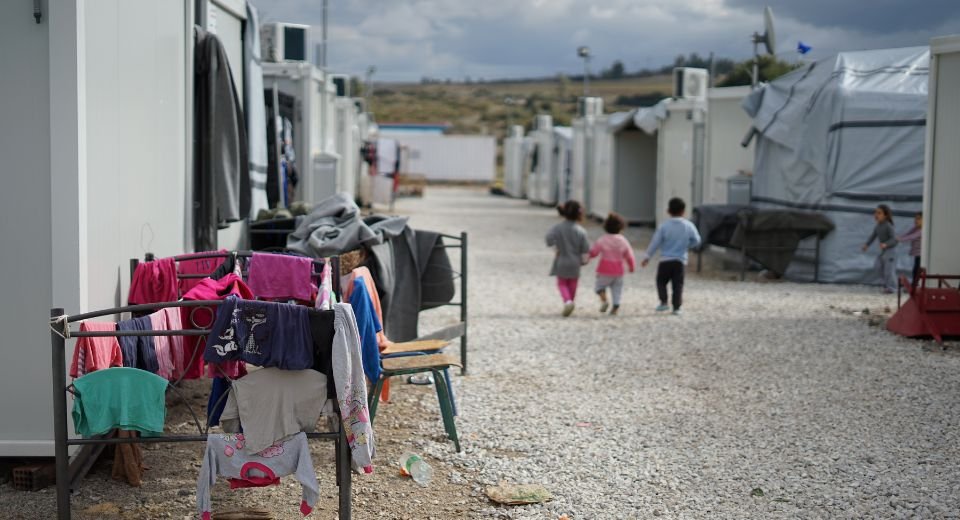HQ Team
October 7, 2023: More than 43 million children have been displaced internally due to climate change during the five years leading to 2021, and an additional 113 million will migrate in the next three decades, UNICEF stated.
Extreme weather events, storms, droughts, and floods have displaced children and their miseries during drawn-out disasters are often under-reported, according to a UNICEF report.
The internal displacements of children took place in 44 countries over a six-year period – or about 20,000 child displacements a day. Floods and storms accounted for 40.9 million — or 95% — of recorded child displacements between 2016 and 2021.
The world has yet to recognise climate migrants and
find ways of protecting the children as catastrophes intensify and leave thousands homeless, according to the report.
Rising seas are eating away coastlines, storms are battering cities, and the drought between 2016 and 2021 in Somalia, is exacerbating conflict. “Unlike during floods or storms, there are no pre-emptive evacuations during a drought.”
“The reality is that far more children are going to be impacted in (the) future, as the impacts of climate change continue to intensify,” said Laura Healy, a migration specialist at UNICEF and one of the report’s authors.
Storms
Nearly a third, or 43 million — of the 134 million times that people were uprooted from their homes due to extreme weather from 2016-21 — included children. Nearly half were forced from their homes by storms.
Of those, nearly 4 of the 10 displacements were in the Philippines. The Philippines, India and China had the most child displacement by climate hazards, accounting for nearly half.
“Children are more vulnerable because they are dependent on adults. This puts them at the risk of being exploited and not having protections,” said Mimi Vu, a Vietnam-based expert on human trafficking and migration issues who wasn’t involved with the report.
Children living in the Horn of Africa or on a small island in the Caribbean are more vulnerable. Many are enduring “overlapping crises” — where risks from climate extremes are compounded by conflict, fragile institutions and poverty, Ms Healy said.
Children bear the brunt
“When you’re desperate, you do things that you normally wouldn’t do. And unfortunately, children often bear the brunt of that because they are the most vulnerable and they don’t have the ability to stand up for themselves,” she said.
Vietnam, along with countries like India and Bangladesh, will likely have many children uprooted from their homes in the future, and policymakers and the private sector need to ensure that climate and energy planning takes into account risks to children from extreme weather, according to the report.
In estimating future risks, the report did not include wildfires and drought, or potential mitigation measures.
Vital services like education and health care need to become “shock-responsive, portable and inclusive,” to help children and their families better cope with disasters.
‘Not working fast enough’
This would mean considering children’s needs at different stages, from ensuring they have opportunities to study, that they can stay with their families and that eventually they can find work.
“We have the tools. We have the knowledge. But we’re just not working fast enough,” Ms Healy said.
UNICEF Executive Director Catherine Russell said “it is terrifying for any child when a ferocious wildfire, storm or flood barrels into their community.
“For those who are forced to flee, the fear and impact can be especially devastating, with worry of whether they will return home, resume school, or be forced to move again.
“Moving may have saved their lives, but it’s also very disruptive. As the impacts of climate change escalate, so too will climate-driven movement.”
‘Invisible’
Displacement – whether short-lived or protracted – can multiply climate-related risks for children and their families.
In the aftermath of a disaster, children may become separated from their parents or caregivers, amplifying the risks of exploitation, child trafficking, and abuse.
Displacement can disrupt access to education and healthcare, exposing children to malnutrition, disease, and inadequate immunisation.
“Yet until now, children displaced by weather-related events have been statistically invisible,” according to the report.
“Existing displacement data are rarely disaggregated by age, and factors such as rapid urbanisation, fragility and conflict can mean that children on the move are even more likely to slip through the cracks.”
